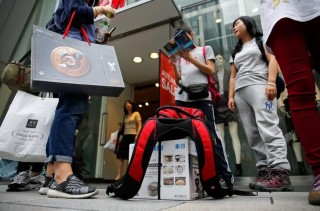Loading
Search
▼ Regional Cities Focus on Foreign Tourists as Shopping Slows
- Category:Shopping
TOKYO — With signs of a slowdown in foreign tourists’ spending at the main urban shopping centers in Japan, officials and businesses in regional cities in Japan are aiming to draw greater interest in their untapped tourism resources as repeat visitors from abroad increase.
Consumption by foreign tourists in Japan is tapering against the backdrop of the strong yen, which makes goods more expensive for them, as well as the Chinese government’s action in April to charge higher taxes on purchases made abroad and brought home by travelers.
Hard hit are department stores in metropolitan areas in Japan banking on sales of luxury brand items that were high on the shopping list of Chinese tourists once known for their phenomenal buying sprees. Their activities had lifted overall retail sales by foreigners at these stores in Japan.
September sales to foreign shoppers dropped 10.1 percent from a year earlier, marking a fall for the sixth consecutive month, the Japan Department Stores Association said Thursday.
Foreign visitors increased at shops such as Daimaru, Isetan and Mitsukoshi but per-shopper spending fell, according to the industry group.
This drop in per-customer sales is a major blow to these retailers struggling already with slumping sales of clothing lines for Japanese customers, because “inbound (tourists) are one of the few areas where we can expect growth,” an official of a major department store said.
“I used to buy brand goods just to show off but now prefer something more practical,” said a 60-year-old Chinese man who was getting a coat at Takashimaya’s Nihonbashi outlet in Tokyo. “I like Japanese-made goods for their smooth feel and meticulous needlework.”
The western Japan city of Fukuoka has also been impacted by moderating shopping activities, dragged down further by inclement weather.
In the city home of Hakata port, the country’s most frequently visited gateway by cruise ships in 2015, department stores and duty-free shops were counting on inbound tourists during China’s holiday-studded Oct. 1-7 period.
But a typhoon that struck the region reduced to only around half the number of buses carrying foreign visitors to Canal City Hakata, a major shopping complex including tax-free outlets, in the period this year compared with previous years.
Hakata Daimaru department store in Fukuoka’s bustling Tenjin shopping area is also experiencing falling sales to foreign travelers. “Per-customer sales are dropping along with a fall in demand for luxury brands,” said an official.
Meanwhile, visitors from abroad to regional cities in Japan including repeat travelers are increasing, according to a report published Monday by the Bank of Japan.
The village of Shirakawa in Gifu Prefecture, known for a cluster of traditional “gassho-style” thatched roof homes, estimates more than 260,000 foreign tourists came last year.
This was a record high for Shirakawa, one of the central Japan villages hosting the scenic farmhouses recognized as a World Heritage asset by the U.N. Educational, Scientific and Cultural Organization.
But the village found that foreign tourists stay only an average 90 minutes there, suggesting that many probably do not dine or stay over.
Shirakawa village is collaborating with travel agencies and financial institutions to come up with ideas for travelers to stay longer including making overnight stays.
“We would like to work out measures to encourage travelers to spend more,” said an official of the village’s tourism promotion division.
Hyogo, Ehime and five other prefectures on Honshu and Shikoku islands sandwiching the Seto Inland Sea in western Japan jointly established a tourism promotion body for local officials to adapt to a shifting interest among foreign visitors from luxury shopping to experience-based trips.
The Inland Sea Setouchi Tourism Authority has proposed tours themed on arts and history as well as souvenirs featuring local produce. “We are targeting repeaters and hoping to reinvigorate local industries,” said an official at the authority.
“Local regions have rich tourism resources such as shrines, temples and natural habitat but they haven’t generated (tourism) demand,” said Shunpei Fujita, a researcher at Mitsubishi UFJ Research and Consulting Co. “It’s necessary to step up efforts to increase knowledgeable personnel engaged in promoting regional tourism.”
© KYODO
- October 28, 2016
- Comment (0)
- Trackback(0)


